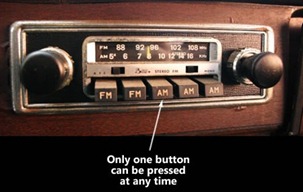
The technologies in play make use of advances in nanotechnology and
semiconductor sequencing technology, enabling the gene sequencing
machines to shrink to the size of a benchtop unit while reading multiple
strands of DNA at once.
“A genome sequence for $1,000 was a pipe dream, just a few years ago,” said Dr. Richard Gibbs, director of the Human Genome Sequencing Center at Baylor College of Medicine, in a statement provided by Life Technologies Corp., one of the companies developing gene sequencing technology. “A $1,000 genome in less than one day was not even on the radar, but will transform the clinical applications of sequencing.”
Earlier this year, Life Technologies said it was taking orders for its new benchtop Ion Proton Sequencer, which it priced at $149,000. The benchtop unit uses what the company calls the next generation of semiconductor sequencing technology, with new high-throughput chips that should enable the machine to sequence a human genome in less than one day.
The company estimates that its Ion Proton I Chip, best-suited for sequencing exomes, or regions in the DNA that code for protein, will be available in the middle of 2012. About six months later, its Ion Proton II Chip, which the company says will be ideal to sequence entire human genomes, will come on the market.
The software to analyze the DNA code the genome sequencer identifies also represents a bottleneck in human genome analysis. To combat this, Life Technologies has developed software that is designed to analyze a single genome in one day on a stand-alone server.
Oxford Nanopore Technologies Ltd. also is pushing hard to produce equipment that can decode the human genome in a day for $1,000. The company uses nanopore “strand sequencing,” which involves pushing the DNA strand through nodes embedded in a robust polymer membrane that contain proprietary array chips that can “read” the encoded genes.
 Individual
strands of DNA are passed through the nanopore by a proprietary
processive enzyme, and each nanopore sequences multiple strands of DNA
in succession. The bases are identified through characteristic
electronic signals involving disruptions in current that occur as the
sequence passes through the nanopore.
Individual
strands of DNA are passed through the nanopore by a proprietary
processive enzyme, and each nanopore sequences multiple strands of DNA
in succession. The bases are identified through characteristic
electronic signals involving disruptions in current that occur as the
sequence passes through the nanopore.
“A genome sequence for $1,000 was a pipe dream, just a few years ago,” said Dr. Richard Gibbs, director of the Human Genome Sequencing Center at Baylor College of Medicine, in a statement provided by Life Technologies Corp., one of the companies developing gene sequencing technology. “A $1,000 genome in less than one day was not even on the radar, but will transform the clinical applications of sequencing.”
Earlier this year, Life Technologies said it was taking orders for its new benchtop Ion Proton Sequencer, which it priced at $149,000. The benchtop unit uses what the company calls the next generation of semiconductor sequencing technology, with new high-throughput chips that should enable the machine to sequence a human genome in less than one day.
The company estimates that its Ion Proton I Chip, best-suited for sequencing exomes, or regions in the DNA that code for protein, will be available in the middle of 2012. About six months later, its Ion Proton II Chip, which the company says will be ideal to sequence entire human genomes, will come on the market.
The software to analyze the DNA code the genome sequencer identifies also represents a bottleneck in human genome analysis. To combat this, Life Technologies has developed software that is designed to analyze a single genome in one day on a stand-alone server.
Oxford Nanopore Technologies Ltd. also is pushing hard to produce equipment that can decode the human genome in a day for $1,000. The company uses nanopore “strand sequencing,” which involves pushing the DNA strand through nodes embedded in a robust polymer membrane that contain proprietary array chips that can “read” the encoded genes.

This proprietary system, known as the GridiON system, is initially
designed to deliver tens of gigabytes of sequence data per 24 hour
period, and the user can choose how long to run the system. The GridiON
cartridges used are disposable; each cartridge initially is designed for
real-time sequencing by 2,000 individual nanopores at once. However,
the technology is scalable, and Oxford Nanopore says alternative
configurations with more than 8,000 nanopores will become available
early next year.
This setup potentially could produce human genome decoding with lightening speed: Oxford Nanopore says that a 20-node installation using an 8,000 nanopore configuration could deliver a complete human genome in 15 minutes.
Oxford Nanopore also has made the technology smaller: the MiniON is a disposable DNA sequencing device about the size of a USB memory stick that should retail at less than $900.
Multiple other companies are developing competing technologies to decode genomes. Complete Genomics, for example, has developed novel combinational probe-anchor ligation (cPAL) technology that it says allows particles of DNA that are formed into nanoballs to be read efficiently and accurately. The company offers both the gene-sequencing equipment, plus a gene-sequencing service. Illumina Inc., which uses what it calls “sequencing by synthesis” technology that enables detection of single bases as they are incorporated into growing DNA strands, also offers equipment plus services.
Of course, simply decoding the genome isn’t enough; clinicians need to be able to use that information to guide diagnostic and treatment decisions. To solve this problem, Life Technologies is working with Carnegie Mellon University to develop open-source software that it hopes will help clinicians understand and interpret the genetic data provided by its devices. In addition, the company has formed a collaborative effort with Yale Medical School to identify best practices for diagnostic development and gene discovery that can be used in a clinical setting.
There are other startups in the field. Personalis Inc., for example, is developing software to interpret genomes. Ultimately, all these companies envision a world where routine medical decisions are guided by an individual’s fully-decoded genome.
Source:
National Human Genome Research Institute. DNA Sequencing Costs: Data from the NHGRI Large-Scale Genome Sequencing Program. Accessed May 26, 2012.
This setup potentially could produce human genome decoding with lightening speed: Oxford Nanopore says that a 20-node installation using an 8,000 nanopore configuration could deliver a complete human genome in 15 minutes.
Oxford Nanopore also has made the technology smaller: the MiniON is a disposable DNA sequencing device about the size of a USB memory stick that should retail at less than $900.
Multiple other companies are developing competing technologies to decode genomes. Complete Genomics, for example, has developed novel combinational probe-anchor ligation (cPAL) technology that it says allows particles of DNA that are formed into nanoballs to be read efficiently and accurately. The company offers both the gene-sequencing equipment, plus a gene-sequencing service. Illumina Inc., which uses what it calls “sequencing by synthesis” technology that enables detection of single bases as they are incorporated into growing DNA strands, also offers equipment plus services.
Of course, simply decoding the genome isn’t enough; clinicians need to be able to use that information to guide diagnostic and treatment decisions. To solve this problem, Life Technologies is working with Carnegie Mellon University to develop open-source software that it hopes will help clinicians understand and interpret the genetic data provided by its devices. In addition, the company has formed a collaborative effort with Yale Medical School to identify best practices for diagnostic development and gene discovery that can be used in a clinical setting.
There are other startups in the field. Personalis Inc., for example, is developing software to interpret genomes. Ultimately, all these companies envision a world where routine medical decisions are guided by an individual’s fully-decoded genome.
Source:
National Human Genome Research Institute. DNA Sequencing Costs: Data from the NHGRI Large-Scale Genome Sequencing Program. Accessed May 26, 2012.



























